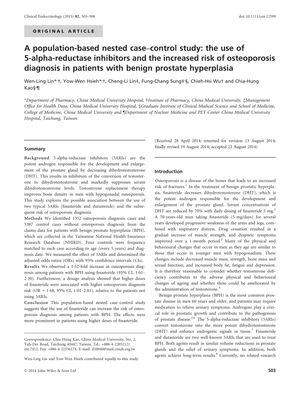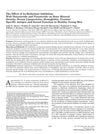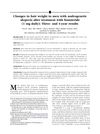A Population-Based Nested Case-Control Study: The Use of 5-Alpha-Reductase Inhibitors and the Increased Risk of Osteoporosis Diagnosis in Patients with Benign Prostate Hyperplasia
August 2014
in “
Clinical endocrinology
”

TLDR Taking finasteride for benign prostate hyperplasia may increase the risk of osteoporosis, especially at higher doses.
In a population-based nested case-control study from 2014, researchers investigated the association between the use of 5-alpha-reductase inhibitors (5 ARIs), specifically finasteride and dutasteride, and the risk of osteoporosis diagnosis in patients with benign prostate hyperplasia (BPH). The study included 1,352 cases of osteoporosis diagnosis and 5,387 controls without an osteoporosis diagnosis from the Taiwanese National Health Insurance Research Database. The results showed that patients with BPH using finasteride had a 1.52-fold increased risk of being diagnosed with osteoporosis (95% CI, 1.01–2.30). Additionally, higher doses of finasteride were associated with an even greater risk of osteoporosis diagnosis (OR = 1.68; 95% CI, 1.01–2.81) compared to patients not using 5 ARIs. The study concluded that finasteride use could increase the risk of osteoporosis diagnosis in patients with BPH, particularly at higher doses.











